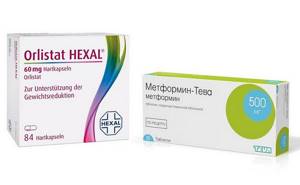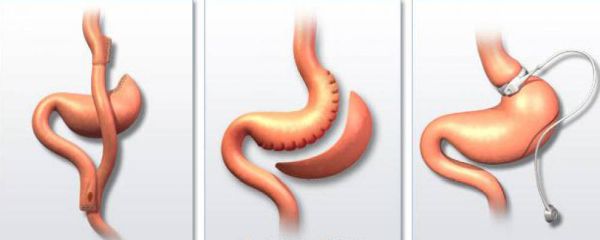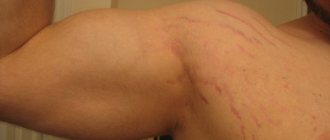Against the backdrop of the popularization of a healthy lifestyle and everything connected with it, first of all, this is, of course, the absence of extra pounds, which have a negative impact not only on the physiological state of the human body, but also on the moral one. The key to health for many is quite naturally a fit, elastic and healthy body. In medicine, there are several main types of fat deposits, and the so-called visceral deposits are recognized as one of the most dangerous, because ordinary subcutaneous fat, as a rule, causes only aesthetic inconvenience for its carrier.
What is visceral fat?
A visual representation of where visceral fat is located
This medical term refers to fat deposits that form directly on the internal organs of a person. Normally, absolutely everyone has visceral fat, since initially it has a number of positive functions, among which are the following:
- Creating a certain airbag, i.e. protective shock-absorbing function. For example, during physical activity, shocks, falls and much more.
- Visceral fat is used by the body as an additional and one of the last sources of nutrition in unusual situations.
It is characteristic of visceral fat that it can be in excess even in thin people; only professionals can determine it with the naked eye. A clear sign of the presence of this type of fat deposits is a violation of metabolic processes, as a result of which the risk of various diseases extremely dangerous to human health increases significantly, for example:
- The appearance of atherosclerotic plaques leading to atherosclerosis and concomitant diseases of the cardiovascular system. Large volumes of visceral fat deposits increase the level of cholesterol, which is deposited on the vascular walls and increases the risk of stroke or heart attack.

- The second type of diabetes mellitus is sometimes the result of numerous visceral deposits that have a negative effect on carbohydrate metabolism.
- Visceral fat also affects bone tissue, resulting in a risk of osteoporosis.
- It is noted that night attacks of suffocation, in medicine this is called apnea, are also a possible consequence of the described problem.
- A large level of visceral fat deposits is observed in the abdominal cavity, which ultimately leads to an enlarged abdomen, this becomes especially noticeable in men who have huge so-called “beer” bellies against the background of a small amount of subcutaneous fat. Normally, it is believed that the ratio of ordinary subcutaneous and such fat should be within 10% to 90%. In females, there is a greater amount of deposits on the hips and surrounding areas.
Cosmetic procedures
To speed up the process of getting rid of visceral fat, you need to do effective cosmetic procedures. These include the following:
- hydromassage;
- wraps;
- abdominal massage;
- sauna;
- cold and hot shower.
Hydromassage does an excellent job of removing belly fat and normalizing blood circulation. Baths and saunas also quickly eliminate excess weight, activate metabolic processes and remove toxic substances through the pores.

With a contrast shower, fat cells are actively burned and metabolic processes are accelerated.
Another effective method is wraps. They help saturate the skin with oxygen, stimulate blood circulation, and remove toxic substances. This helps cleanse the body of excess fluid and leads to burning belly fat.
To carry out the procedure, the skin of the abdomen is cleaned with a scrub - sea salt or ground coffee. Then it needs to be massaged and pinched. Then apply the medicinal composition to the stomach.
Mustard, clay, honey, and chocolate can be used to make it. If the dermis is highly sensitive, vegetable oil should be added to the mixture in a 2:1 ratio.
Then you should lubricate the stomach and sides with a useful composition and wrap them in cling film. From above, you need to wrap the problem areas with a warm scarf and actively move for half an hour. Then the composition can be washed off.
A special massage helps get rid of visceral fat. However, the procedure should only be carried out by a specialist, because important organs are located in this area. The course of therapy must include at least 15 sessions.
A professional treats problem areas using special warming agents. This will help stimulate blood circulation and lead to the breakdown of fat cells. After the procedure, hematomas may remain. However, they pass quite quickly.
Characteristic features of subcutaneous and visceral fat deposits
Before talking about how to determine the presence of a problem, where it could come from and how to deal with it, it is necessary to dwell on the fact that was mentioned earlier, namely that visceral fat is significantly different from subcutaneous fat.
Normally, a healthy person needs the presence of subcutaneous fat, which is a kind of storehouse of energy consumed by the body in unusual situations. It is also necessary to maintain the correct body temperature, especially during the cold season. Excess subcutaneous fat is an unhealthy lifestyle and diet, so getting rid of the problem is quite easy; modern medicine offers quick solutions - liposuction.
Excess visceral fat is much more difficult to remove, since it is located directly on the internal organs of a person. It is necessary to know the specific amount of excess fat, because this fat takes an active part in almost all biochemical processes in the body and especially in the secretion of hormones.
ICU classification for men
| Age (years) | Below normal | Norm | Excess | Obesity |
| 20-39 | Less than 8% | 8% — 21% | 21% — 26% | above 26% |
| 40-59 | Less than 11% | 11% — 23% | 23% — 29% | above 29% |
| 60-79 | Less than 13% | 13% — 25% | 25% — 31% | above 31% |
The human body requires a certain amount of fat to function properly, conserve energy, and protect vital organs. Triglycerides, cholesterol and other essential fatty acids that the body receives from outside act as messengers and enable protein to do its job. They are responsible for chemical reactions that help control growth, immune function, reproduction and other aspects of basic metabolism.
It is important to control the body's fat balance to avoid adverse consequences.
Visceral deposits - where do they come from?
According to recent studies, the main reason for the appearance of excess visceral deposits is genetic predisposition. One of the provoking moments, undoubtedly, is the wrong lifestyle of a person, which spurs the activation of this process.

Women who have a pear-shaped figure are at the lowest risk of encountering the problem, when even if they gain excess weight in the abdominal area, it is minimal. However, upon reaching the age of 40, every representative of the fair sex falls into a risk group due to an active decrease in the process of hormone production. Men who experience a decrease in testosterone production are in exactly the same position.
Causes
What causes of visceral obesity are currently known to medicine? Factors that provoke the development of the disease include:
- genetic, hereditary predisposition;
- hormonal disorders during pregnancy, lactation, menopause - in women;
- diseases of the nervous system: constant stressful situations, psychosis, panic attacks;
- beer abuse - in men (testosterone is replaced by female hormones and is no longer involved in the breakdown of fats);
- sedentary lifestyle: lack of active rest, physical exercise, walking;
- improper functioning of the hypothalamus;
- nutritional imbalance, when there are more carbohydrates and fats in the diet than proteins;
- binge eating;
- side effect after taking certain medications: hormones, antidepressants, tranquilizers;
- problems with the endocrine system: hypothyroidism, Itsenko-Cushing syndrome;
- decrease in serotonin (the hormone of happiness, which is also responsible for the feeling of fullness).
If obesity is caused by poor nutrition and a sedentary lifestyle (it is classified as the nutritional type), the chances of recovery are quite high. Here a balanced diet and physical activity come to the fore.
Everything is much more complicated with genetics and congenital diseases. If the development of pathology is dictated by them, it will be chronic.
How to determine the level of visceral fat and whether it has exceeded the norm
Even if your total weight is within the normal range, this is by no means an indicator of the absence of problems with visceral fat. The most accurate determination of the level of such fat complications is an examination, but there are also some indicators that can be examined personally, namely:

- The very first measurement is the waist; normally, for males it reaches 94 cm; for women, the figure is lower and equals 88 cm.
- You can measure your waist and hips at their widest points and make simple calculations. Divide the circle of the first indicator by the second. The resulting coefficient shows deviations from the norm; for men it is bad to eat above 0.95, for women – 0.80.
- Palpation of the abdomen is one of the methods. If, it turns out, you tightly compress the abdomen in the navel area and the fat deposits are soft, this eliminates the presence of excess visceral fat, since only subcutaneous fat is compressed so easily.
Acceptable rate
In healthy people, visceral fat makes up 10% of total body fat.
The total amount of fat in the female body is greater than that of men. However, the norm of visceral fat in a woman’s body is less. This means that men are more likely to accumulate this substance.
To determine the volume of visceral fat, magnetic resonance imaging is performed. However, there is a simpler method that allows you to evaluate this indicator.
It will not help determine the percentage of fat, but it will help to identify excesses of the norm.
To do this, you need to measure your waist using a measuring tape. For women, this figure should not exceed 84 cm, for men – 94 cm. During measurements, you should not pull in your stomach.
If your waist size exceeds the specified values, this indicates the accumulation of excess fat. This means that there is a threat of developing dangerous pathologies.

How to get rid of visceral fat

The solution to the issue of excess visceral fat is similar to the fight against subcutaneous fat. First of all, this is to determine the cause of the problem; if it is not related to diseases, then it is necessary to create the right diet. Food should be rich in proteins and vitamins. Exercising whenever possible, for example, regular walking, Nordic walking with poles, cycling, and even dancing, helps to activate metabolic processes and, accordingly, fight visceral fat. Quitting bad habits and treating chronic diseases are also included in complex therapy.
Treatment methods
Therapy for visceral obesity is divided into weight loss and maintaining this weight. This entire process can take time - about one year.
Visceral obesity is treated by an endocrinologist, who can involve a cardiologist and surgeon in treatment.
Treatment of excess weight is comprehensive and the main method is diet and an active lifestyle. The diet also accompanies the drug course of therapy.
Nutrition
The main focus of the diet is to reduce excess weight by reducing fat volume.
Diet principles:
- Reduce daily caloric intake by 30.0%;
- Reduce fat and carbohydrate intake;
- Changes in the nutrition process should be carried out gradually;
- 1 time per week - fasting days;
- The diet must comply with the approved products provided by the endocrinologist;
- Minimum salt and sugar;
- You need to eat up to 6 times a day in small portions;
- You can use the services of nutritionists, or use diet table No. 8 according to Pevzner.
In combination with a diet, use sports, or exercise in a fitness club, and be sure to walk or ride a bike.

The diet must correspond to permitted products
Drugs
If dietary nutrition does not help reduce weight in visceral obesity, then the doctor prescribes drug therapy with the following drugs:
- Medicine Orlistat . The course of therapy is from 90 days to 4 years;
- The drug Metroformin is used for diabetes mellitus , which reduces the percentage of fat absorption from the intestines;
- Analogues of the glucagon-like peptide substance , which give the patient a feeling of fullness in the stomach.
It is also necessary to take into account that the use of diuretics in the treatment of visceral obesity is prohibited and it is impossible to use any drugs on your own.
The effectiveness of the medications occurs within 12 months.
If the process of losing weight has been successful, then re-diagnosis of the patient’s body is necessary in order to identify new parameters of the body and possible risk factors for the development of visceral fat gain.

The drugs Orlistat and Metformin used in the treatment of visceral obesity
Operations
If drug treatment for visceral obesity is ineffective, the patient is offered surgical intervention.
The surgical techniques are:
- Installation of a balloon inside the stomach cavity, which absorbs a certain part of the food;
- Shunting in the small intestine area;
- Reduced gastric capacity.
Also, after surgery, it is necessary to go through a rather difficult period of rehabilitation process, which lasts more than one month. At the same time take iron supplements, calcium salt minerals and multivitamins.
Liposuction is performed after stabilization of body weight, and during this period, abdominal plastic surgery can be performed.

Bypass surgery and gastrectomy










